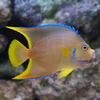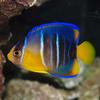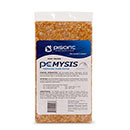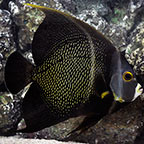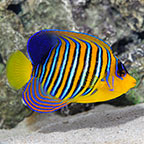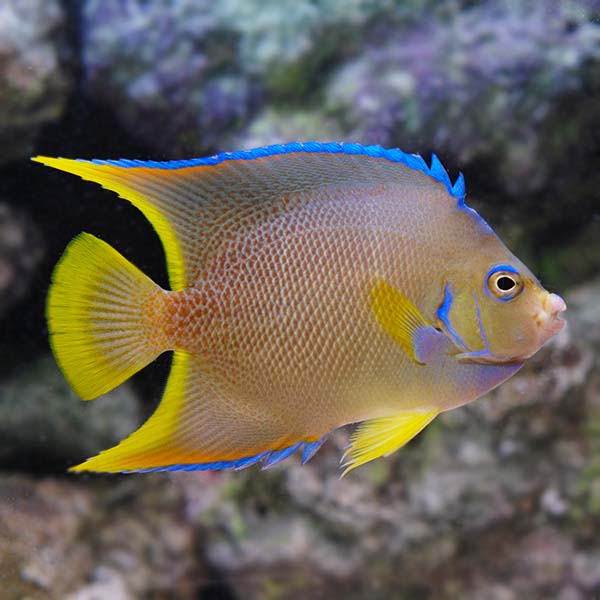
Additional locales and sizes may be available!
Additional locales and sizes may be available! Email me when availableQuick Stats
What do these Quick Stats mean? Click here for more information
What do these Quick Stats mean? Click here for more information
Overview
The Blue Angelfish requires a large aquarium of at least 250 gallons with plenty of hiding places. Tending towards aggression, especially directed at other angels, the Blue Angelfish is best kept as the only angelfish in the tank. Not a good reef dweller, the Blue Angelfish is prone to nip at stony and soft corals (sessile invertebrates) and clam mantles.
It is hermaphroditic, very difficult to breed in an aquarium, and there are no distinguishing markings that differentiate males from females.
The diet of the Blue Angelfish should include Spirulina, marine algae, high-quality angelfish preparations, mysis or frozen shrimp, other meaty items, and live rock for grazing.
The Small Juvenile will contain the Juvenile colorations or may be color shifting to a young adult, while the Medium will be a sub-adult, and the Large will be in Adult coloration.
Approximate Purchase Size: Juvenile - Small 1" to 1 1/2"; Medium 1 1/2" to 2 1/4"; Large 2 1/4" to 3"; Adult - Small 3" to 3 1/2"; Medium 3 1/2" to 5"; Medium/Large 5" to 6"; Large 6" to 7"; XLarge 7” or larger.


